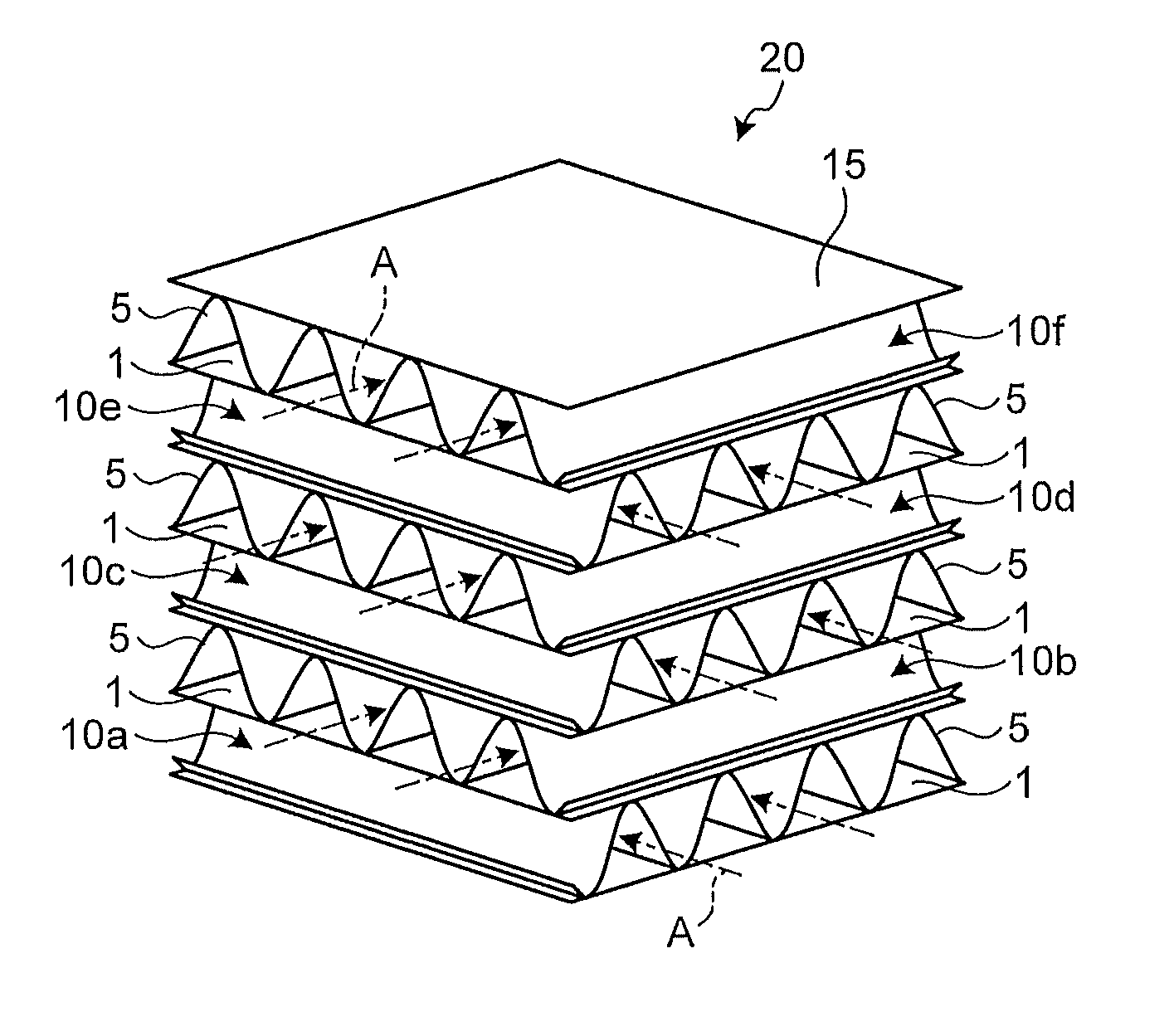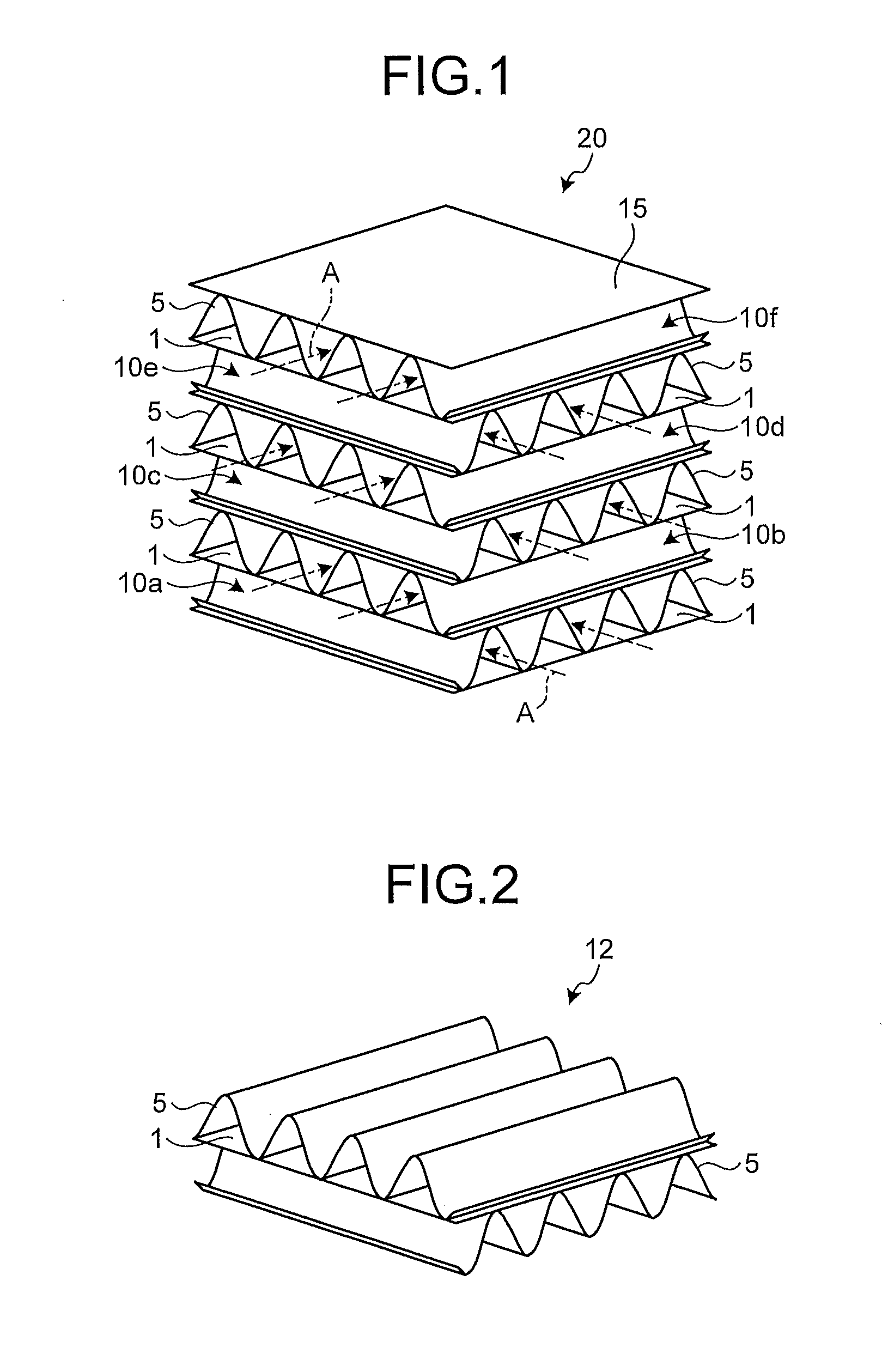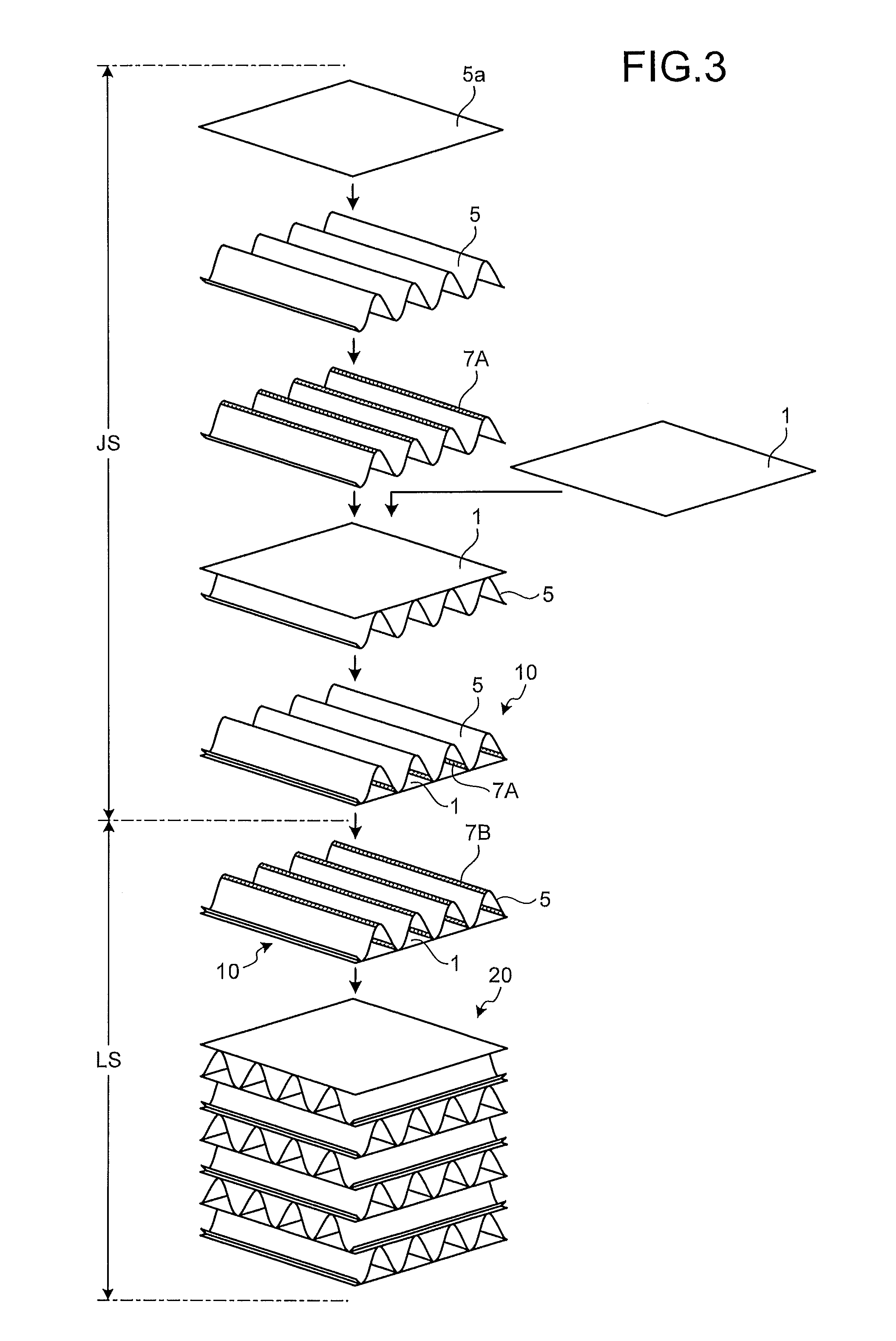Method of manufacturing total heat exchange element and total heat exchange element
a technology of total heat exchange element and manufacturing method, which is applied in the direction of manufacturing tools, lighting and heating apparatus, heating types, etc., can solve the problems of odor dissipation, complicated and expensive accessories, etc., and achieves the effect of satisfying workability, preventing, and easily suppressing the fall in workability
- Summary
- Abstract
- Description
- Claims
- Application Information
AI Technical Summary
Benefits of technology
Problems solved by technology
Method used
Image
Examples
first embodiment
[0039]FIG. 1 is a schematic perspective view of an example of a total heat exchange element. The total heat exchange element shown in the figure is a cross-flow total heat exchange element in which plural element forming units are laminated. In FIG. 1, six element forming units 10a to 10f are shown.
[0040]The respective element forming units 10a to 10f have sheet-like partitioning members 1 and corrugated space holding members 5 that are respectively bonded on the partitioning members 1 and form paths for air flows. The partitioning members 1 and the space holding members 5 are mad of paper. A desired water-soluble agent is impregnated in the partitioning members 1 and the space holding members 5. The partitioning members 1 and the space holding members 5 in the element forming units10a to 10f are bonded to each other by a water-solvent adhesive (not shown). The element forming units adjacent to each other in a laminating direction are also bonded to each other by the water-solvent a...
second embodiment
[0054]Element forming units forming a total heat exchange element can also be manufactured by continuous processing other than being manufactured by batch processing. The element forming units can be obtained by performing a step of sticking long base paper as a material of space holding members and long base paper as a material of partitioning members together to manufacture long element forming unit materials and a step of cutting the long element forming unit materials into appropriate size. In this case, the long base paper as the material of the space holding members and the long base paper as the material of the partitioning members are shaped into rolls in advance, respectively.
[0055]FIG. 4 is a schematic diagram of an example of equipment used in manufacturing element forming units according to continuous processing. The step of manufacturing the long element forming unit materials is performed by this equipment. In the equipment shown in the figure, long base paper 30 as a ...
third embodiment
[0064]In this embodiment, a water-solvent adhesive in which a water-soluble moisture-absorbing agent is dissolved is used only in a bonding step. An adhesive in which the water-soluble moisture-absorbing agent is not dissolved is used in a laminating step. Element forming units can be manufactured by the batch processing as in the manufacturing method explained in the first embodiment or can be manufactured by the continuous processing as in the manufacturing method explained in the second embodiment.
[0065]When the element forming units are manufactured by the batch processing, a total heat exchange element can be manufactured in the same manner as in the manufacturing method explained in the first embodiment except that the adhesive in which the water-soluble moisture-absorbing agent is not dissolved, for example, a polyvinyl acetate emulsion adhesive is used as the adhesive 7B shown in FIG. 3. On the other hand, when the element forming units are manufactured by the continuous pro...
PUM
| Property | Measurement | Unit |
|---|---|---|
| angle | aaaaa | aaaaa |
| angle | aaaaa | aaaaa |
| weight | aaaaa | aaaaa |
Abstract
Description
Claims
Application Information
 Login to View More
Login to View More - R&D
- Intellectual Property
- Life Sciences
- Materials
- Tech Scout
- Unparalleled Data Quality
- Higher Quality Content
- 60% Fewer Hallucinations
Browse by: Latest US Patents, China's latest patents, Technical Efficacy Thesaurus, Application Domain, Technology Topic, Popular Technical Reports.
© 2025 PatSnap. All rights reserved.Legal|Privacy policy|Modern Slavery Act Transparency Statement|Sitemap|About US| Contact US: help@patsnap.com



